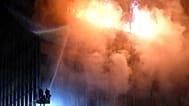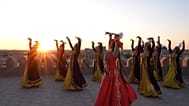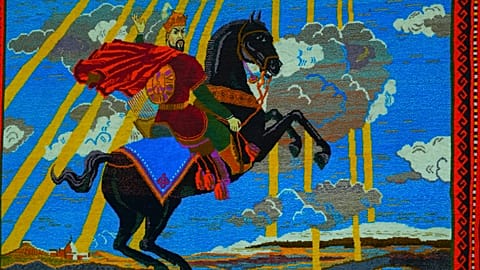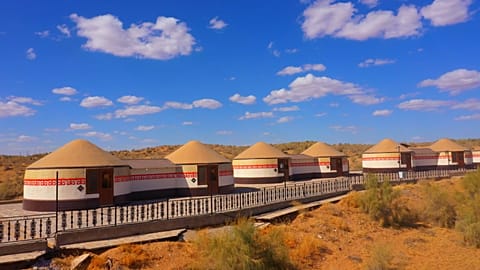From the desert winds of Karakalpakstan to the courtyards of Andijan, Uzbekistan’s music and dance heritage remains a living language of culture and memory.
From the whispers of ancient melodies to the heartbeat of modern dance, Uzbekistan carries an extraordinary legacy. It is a living tapestry of rhythm, song, and movement that continues to evolve while keeping its roots deep in history.
Across the country’s diverse regions, each melody, gesture, and step describes and defines the land and its people, transforming intangible heritage into something felt and shared in the present.
The winds of Karakalpakstan
In the wide expanse of Karakalpakstan, where the desert meets the river, the wind itself seems to hum with memory.
The Karakalpakstan Maqom Ensemble preserves and reinterprets traditional music, drawing on centuries-old poetry and melody.
“As our ensemble performs any piece, it is first and foremost with love and devotion for this place,” says Sadaddin Sapayev, the ensemble’s Artistic Director.
One of the ensemble’s signature works, “The Winds of Jeyhun”, unites traditional lapar songs with the words of Ibrohim Yusufov, who is people’s poet of Uzbekistan and hero of Karakalpakstan. It’s a piece that flows like the Amu Darya River itself, blending voices and instruments into something both ancient and immediate.
Karakalpak cultural life, says Ilmira Urazbayeva of the “Ayqulash” Ensemble, offers a bridge between generations: “It allows young people, both those who understand and those who are just learning, to connect with their history and bring the meanings of the past into our spiritual life.”
In Karakalpakstan, every beat of the drum and every vibration of the dutar string feels like a conversation among generations. Dance and music are more of a performance, they are actually acts of remembrance, a bridge carried forward.
Shashmaqom: The soul of Bukhara
In the ancient city of Bukhara, music becomes meditation. The Shashmaqom, a complex and revered classical form, is not for dancing feet but for the soul. Developed between the late 18th and early 19th centuries, its interwoven melodies are often described as a dialogue between the heart and divine harmony.
According to Professor Bexruz Boltayev of Bukhara State University, Shashmaqom demands years of discipline: “It requires a great deal of effort. Not everyone can perform it. To master it, one must have a musical ear, a strong foundation, and begin from a young age.”
Shashmaqom becomes for the performers a way of cultivating patience, precision, and depth. They are all values that have shaped generations of Uzbek musicians. Its enduring appeal lies not only in its beauty but in its moral and educational spirit, forming a living classroom of sound and meaning.
The joyful steps of Andijan
If Shashmaqom is the music of contemplation, the Andijan Polka is its exuberant opposite: full of energy and joy. In the Ferghana Valley, the polka leaps through streets and courtyards, uniting people of all ages in motion.
“People from 7 to 70 years old can dance the Andijan Polka,” says Alisher Tojiboyev, Head of the Folk Ensemble Andijon Polkasi. “We adapt it for children, students, and young people, it belongs to everyone.”
Andijan Polka was born in the 1930s and there are two different stories about its beginning: it started either on a theatre stage, or in the swirl of weddings and public celebrations.
Its choreography embodies the spirit of agility, community, and pride. Choreographer Abdulaziz Yusupov describes it vividly: “Our movements show strength: the lifting of stones, the drawing of a bow, the walk of elders. In every gesture, there is meaning.”
The dance captures both everyday life and idealized beauty, a reminder that joy, too, is an essential form of heritage.
Lazgi: The fire of Khiva
As dawn warms the ancient rooftops of Khiva, a dance stirs: Lazgi. It is one of the world’s oldest surviving dances, with roots stretching back more than 3,000 years. Born in Khorezm, it is a dance of fire, spirit, and joy. Each motion echoing the wind, the sun, and the pulse of life itself.
“Whoever performs Lazgi, wherever it is danced, always stands oriented toward the sun,” explains Professor Gavhar Matyoqubova of the Khorezm Lazgi Academy. “Life first flows to the fingers, then the wrists, the shoulders, the body — and the human is revived. This is divine music. No words can bind it.”
Today, Lazgi has transcended borders. Performers from Austria, Japan, and the United Kingdom have come to Uzbekistan to learn it. Scholars at international conferences have even called Lazgi a “diplomatic dance,” a cultural language capable of bridging divides and fostering reconciliation where words cannot.
Heritage in motion
From the windswept plains of Karakalpakstan to the desert cities of Khiva, from the meditative tones of Bukhara to the joyful rhythms of Andijan, Uzbekistan’s intangible heritage continues to thrive not just as a relic, but as a living expression of identity.
Each region adds a distinct voice to the country’s cultural symphony. Together they reveal a shared truth: that heritage is more about participation.
When dancers raise their hands to the sun or a musician plucks a centuries-old melody on the dutar, the past lives anew in the moment.
As Artistic Director Sadaddin Sapayev puts it, every performance begins “with love and devotion for this place.” That devotion resonates across the country, in the songs of young performers, in classrooms and festivals.
Uzbekistan’s intangible heritage endures not through memory alone, but through motion. It is a timeless rhythm that carries the spirit of its people from ancient melodies to the modern world.


















